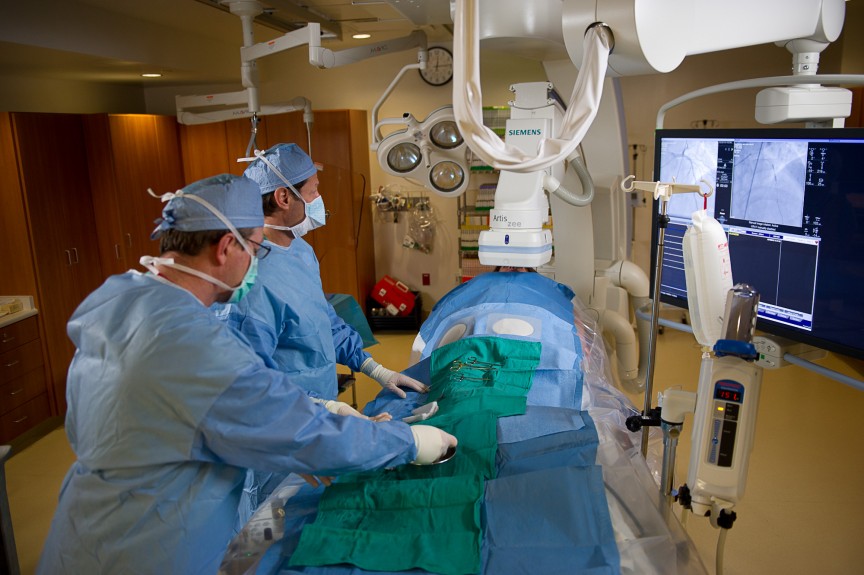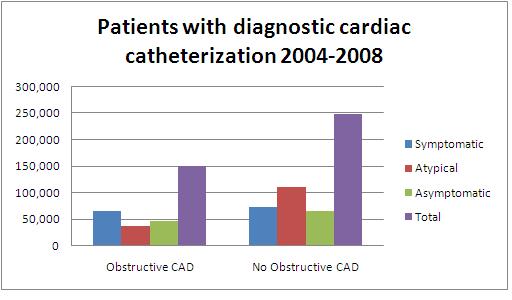…slightly more than one third of patients without known disease who underwent elective cardiac catheterization had obstructive coronary artery disease…
Low Diagnostic Yield of Elective Coronary Angiography
In an article, published in the NEJM in 2010, the authors analyzed data from a national registry on cardiac catheterization, reporting only 38% of elective, diagnostic coronary angiograms showed obstructive lesions, and 39% of angiograms were interpreted as showing no disease. The findings indicate a relatively low diagnostic yield of elective coronary angiography, a procedure that exposes patients to substantial radiation.
|
Patients with diagnostic cardiac catheterization |
|||||||
|
Obstructive CAD |
No Obstructive CAD |
P Value |
|||||
|
Total (in %) |
Total (in %) |
||||||
|
Total Caths |
1,148,405 |
100.00% |
|||||
|
Elective |
629,325 |
54.80% |
|||||
|
w/o known heart disease |
397,954 |
63.24% |
|||||
|
Symptomatic |
65,735 |
43.90% |
72231 |
29.10% |
<0.001 |
||
|
Atypical |
36,836 |
24.60% |
109711 |
44.20% |
<0.001 |
||
|
Asymptomatic |
47,168 |
31.50% |
66273 |
26.70% |
<0.001 |
||
|
Total |
149,739 |
248215 |
|||||
|
Patients with no CAD |
60.33% |
<0.001 |
|||||
|
Patients with diagnostic cardiac catheterization |
||||||
|
Obstructive CAD |
No Obstructive CAD |
|||||
|
Total (in %) |
Total (in %) |
|||||
|
Total Caths |
1,148,405 |
100.00% |
||||
|
Elective |
629,325 |
54.80% |
||||
|
w/o known heart disease |
397,954 |
63.24% |
||||
|
Symptomatic |
65,735 |
43.90% |
72231 |
29.10% |
||
|
Atypical |
36,836 |
24.60% |
109711 |
44.20% |
||
|
Asymptomatic |
47,168 |
31.50% |
66273 |
26.70% |
||
|
Total |
149,739 |
248215 |
||||
|
Patients with no CAD |
60.33% |
|||||
(From: Manesh R. Patel, M.D.,et al.,N Engl J Med 362;10, 886-895)



Comments 2
Hello,
Dr T what would you recommend today as an initial screening tool to assess the level of cardiovascular disease in a patient today. 50yrs age, male, 2 two risk factors.
I am considering CTA with “virtual” FFR. Thoughts?
Thanks for you general opinion.
Author
The results indicate that elective cardiac catherization is a poor tool as an initial screening test. Since other, less invasive and expensive tests are available, one wonders what prompted unnecessary cathetrization in over 60% of the patients studied in this paper.